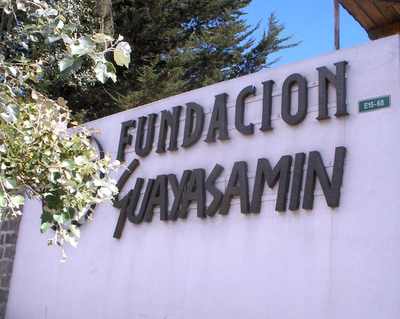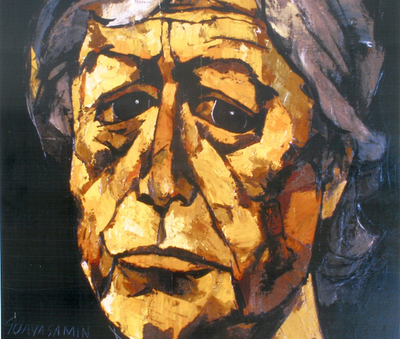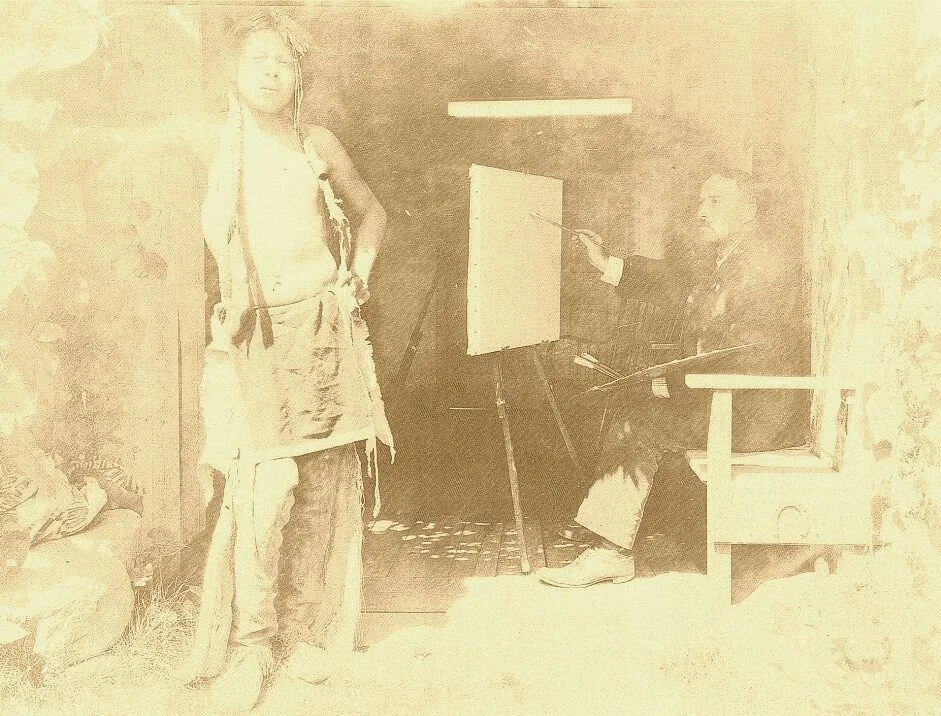It started out with a scant breakfast (have you ever tried a one egg omelet?) and miles of walking around the city streets of Quito in Ecuador wearing wedged sandals instead of sneakers. Wedged sandals are not the shoes of choice when traveling. My feet, already aching, were really in a state of extreme protest, a not too subtle indication of the agony to come. We were on our way to visit the art exhibit we’d been anticipating all day, but hadn’t quite left any time out for either lunch or water.
 The Guayasamin Museum was our destination and surpassed all our expectations. The paintings and sculpture were impressive and the house in which they were displayed, splendidly representative of the Ecuadorian painter’s era (1919-1999). The original house had an extensive collection of pre-Columbian art he had acquired over decades. The only downside was that there was no place to eat! Our dilemma was if we were to start searching for a restaurant, there wouldn’t be time to get to Guayasamin’s Capilla del Hombre (The Chapel of Man), which was a “must.” By now it was a toss-up as to which was worse, my overwhelming hunger or my throbbing feet.
The Guayasamin Museum was our destination and surpassed all our expectations. The paintings and sculpture were impressive and the house in which they were displayed, splendidly representative of the Ecuadorian painter’s era (1919-1999). The original house had an extensive collection of pre-Columbian art he had acquired over decades. The only downside was that there was no place to eat! Our dilemma was if we were to start searching for a restaurant, there wouldn’t be time to get to Guayasamin’s Capilla del Hombre (The Chapel of Man), which was a “must.” By now it was a toss-up as to which was worse, my overwhelming hunger or my throbbing feet.
We decided to skip the restaurant search and walk to the Capilla which, we were assured, was just a short distance away. We simply couldn’t take a chance on missing the experience of visiting this most amazing structure, Oswaldo Guayasamin’s final dream, completed three years after his death as a tribute to the 500-year struggle of indigenous people of the continent.
We expected to find a small chapel close by. As we started walking, we realized it wasn’t quite that close. After several blocks of trudging up a steep incline into the hills on uneven, broken sidewalks, I was on the verge of fainting. We had had nothing since our very sparse breakfast about eight hours previously, no water all day, and the throbbing in my feet felt like some kind of medieval torture.
We soon passed a little tiendita (small grocery store) where we finally were able to buy a bottle of water. By this time I was no longer rational and passed on buying any of the packaged cookies or chips they had available. What was one more deprivation for this pilgrim? I was completely focused on getting to the Capilla. So after a respite of about two minutes, we continued climbing.
Finally, on the verge of complete exhaustion, we arrived! Much to our surprise, this was no small chapel but a conspicuous facility, reminiscent of the Guggenheim Museum in New York, set against the open blue sky of Ecuador. As we walked down the graceful ramp leading to the structure, we were greeted by an original stela of pre-Columbian Mayan civilization. It was from Copan and presented to the museum by the government of Honduras. As a counterpoint to this memorial to antiquity, there were large panels arranged in a semi circle of various images by Guayasamin, but presented in a way that one might expect to find in contemporary Los Angeles. Then, we went inside.
Now, I could take off my shoes and have a few slugs of water. I had done it, crawled on my knees, uphill, over broken glass, in the hot sun, aching and on the verge of delirium (or something like that). I had completed my day as a pilgrim and I was ready to receive that which would be offered. And, what an offering it was.
 Guayasamin Self PortraitThe permanent exhibition was housed on several levels with some of the most breathtaking paintings at least 20 feet in height. The large mural depicting the struggle of oppressed people, and the horrors of war, was reminiscent of Picasso’s “Guernica,” by which he was undoubtedly influenced. Although they were not contemporaries, Picasso being almost 40 years older, there is strong evidence that Guayasamin also identified with the use of art to express a profound sense of moral outrage at the ongoing exploitation of the poor and disenfranchised, as well as the victims of war.
Guayasamin Self PortraitThe permanent exhibition was housed on several levels with some of the most breathtaking paintings at least 20 feet in height. The large mural depicting the struggle of oppressed people, and the horrors of war, was reminiscent of Picasso’s “Guernica,” by which he was undoubtedly influenced. Although they were not contemporaries, Picasso being almost 40 years older, there is strong evidence that Guayasamin also identified with the use of art to express a profound sense of moral outrage at the ongoing exploitation of the poor and disenfranchised, as well as the victims of war.
At the lowest level, in a large, circular pit, was an eternal flame representing, in spite of man’s inhumanity to man, hope for the future. Its simplicity spoke, as strongly as any of the paintings did, of universal faith and the power of hope.
Would it have been the same experience without all the personal drama and physical challenges? Yes and yes and yes!
Susanna Starr, freelance writer, photographer, artist and author of Fifty and Beyond: New Beginnings in Health and Well Being has extensive experience as a speaker, appearing on many talk radio shows. Among other venues she has been an editor for Let Life In and a contributor to Your Life is a Trip. She also is Albuquerque Cultural Travel Examiner for Examiner.com, as well as contributing writer for Global-Writes.com and various other publications. She resides most of the time in a small community near Taos, New Mexico and part time between Oaxaca and Laguna Bacalar, Mexico.


